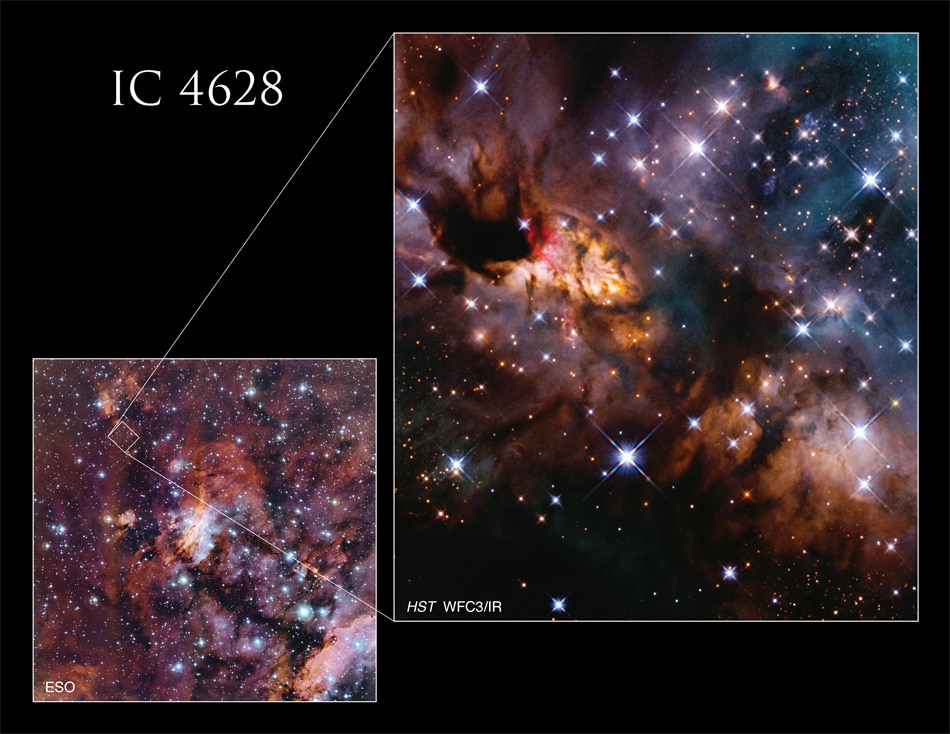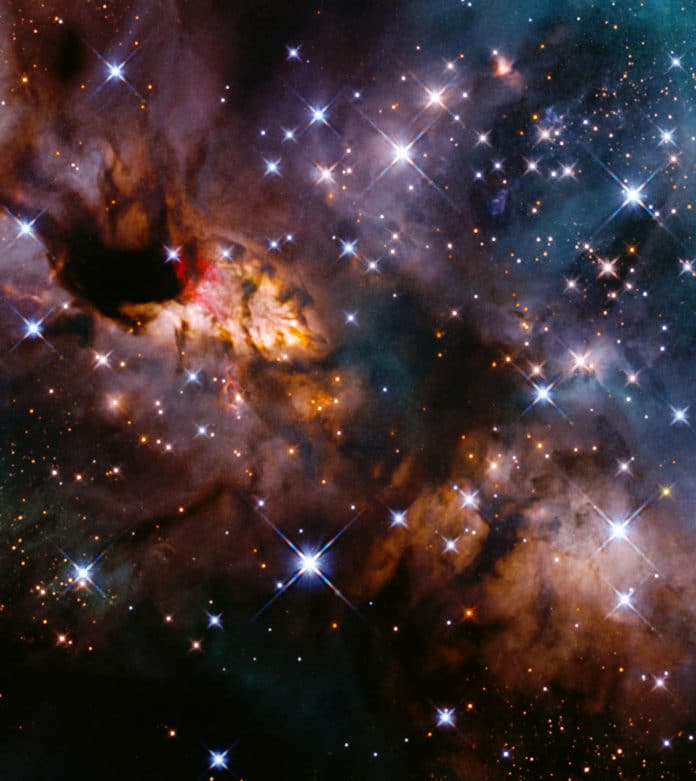NASA/ESA Hubble Space Telescope recently captured a nebula that stretches 250 light-years and covers a space four times the size of the full moon. Prawn Nebula- is a massive stellar nursery located about 6,000 light-years from Earth in the constellation Scorpius. It emits extremely faint light with such wavelength that the human eye cannot detect it.
Also known as IC 4628, the Prawn Nebula is an emission nebula. Its gas has been energized or ionized by the radiation of nearby stars.
As mentioned in the blog, “The radiation from these massive stars strips electrons from the nebula’s hydrogen atoms. As the energized electrons revert from their higher-energy state to a lower-energy state by recombining with hydrogen nuclei, they emit energy in the form of light, causing the nebula’s gas to glow.”

Hubble captured a small section of the nebula in both visible and invisible infrared light. It captured remarkable detail of the nebula’s structure, including bright areas of glowing gas. The red-colored region in the image indicates the presence of ionized iron (Fe II) emission.
This image was captured as part of a survey of massive- and intermediate-size “protostars,” or newly forming stars. Astronomers used the infrared sensitivity of Hubble’s Wide Field Camera 3 to look for hydrogen ionized by ultraviolet light ionized by the protostars, jets from the stars, and other features.
